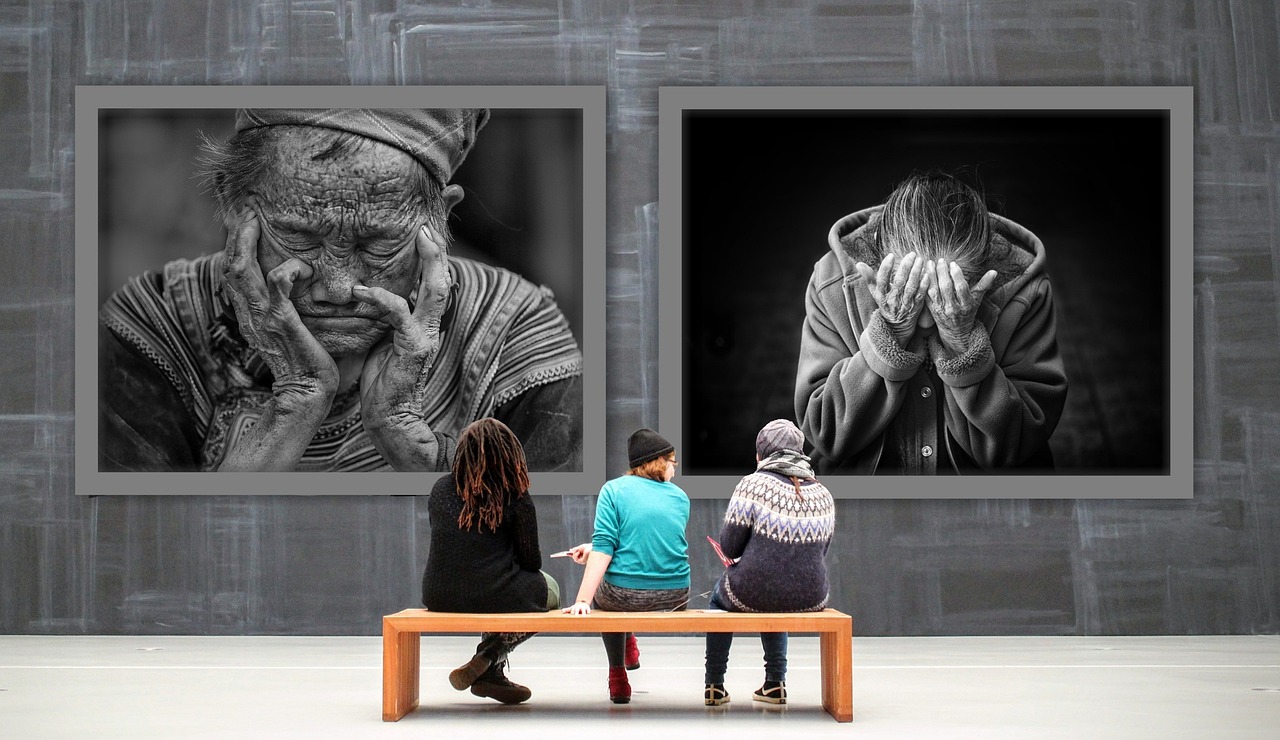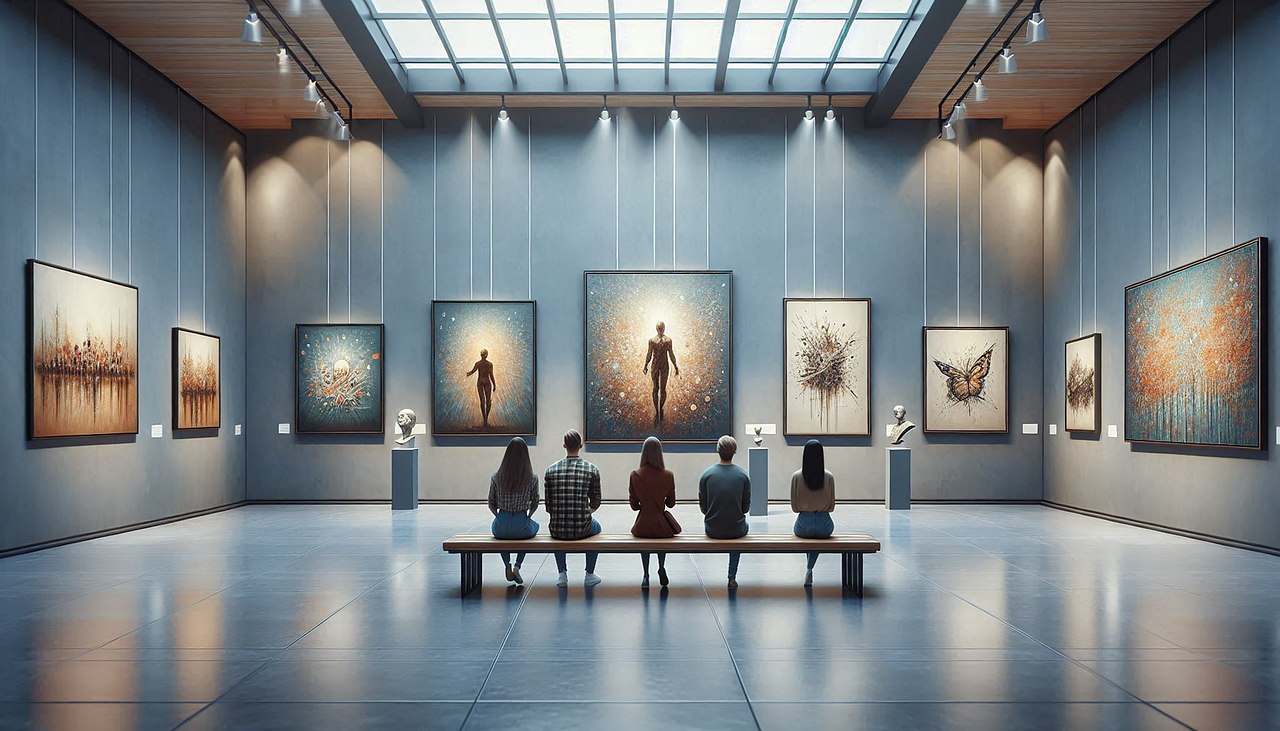Contemporary art galleries serve as vibrant hubs for artistic expression, innovation, and cultural dialogue. These spaces not only showcase the cutting-edge works of established and emerging artists but also play a crucial role in shaping the trajectory of modern art. This comprehensive guide explores some of the world’s most renowned contemporary art galleries, offering art enthusiasts and curious visitors alike a roadmap to experiencing the pinnacle of artistic creativity across the globe.
The Importance of Contemporary Art Galleries
Contemporary art galleries are more than mere exhibition spaces; they are catalysts for artistic growth, societal reflection, and cultural exchange. These institutions serve as crucial intermediaries between artists, collectors, and the public, fostering an environment where new ideas can flourish and challenging conventional artistic norms.
Supporting Emerging Artists
One of the most vital functions of contemporary art galleries is their role in nurturing and promoting emerging talent. These spaces provide a platform for up-and-coming artists to showcase their work, gain exposure, and connect with potential patrons and collectors.
- Jean-Michel Basquiat: Rose to fame through galleries in New York’s East Village
- Yayoi Kusama: Gained recognition through avant-garde galleries in New York
- Banksy: Transitioned from street art to gallery exhibitions, increasing his global influence
- Damien Hirst: Early career boosted by exhibitions at the Saatchi Gallery in London
Fostering Art Innovation
Contemporary galleries are at the forefront of artistic innovation, often pushing the boundaries of what is considered art and introducing new mediums, techniques, and concepts to the public.
| Art Movement | Key Gallery | Notable Innovation |
|---|---|---|
| Pop Art | Leo Castelli Gallery, New York | Elevating everyday objects to fine art status |
| Minimalism | Green Gallery, New York | Emphasis on simplicity and geometric abstraction |
| Installation Art | Sonnabend Gallery, New York | Transforming gallery spaces into immersive experiences |
| Digital Art | bitforms gallery, New York | Pioneering the exhibition of new media and digital artworks |
Top Contemporary Art Galleries in North America
North America boasts some of the world’s most influential contemporary art galleries, with New York City and Los Angeles serving as major epicenters for artistic innovation and exhibition.
Museum of Modern Art (MoMA), New York
The Museum of Modern Art, commonly known as MoMA, stands as a beacon of modern and contemporary art in the heart of New York City. Founded in 1929, MoMA has consistently been at the forefront of showcasing groundbreaking works and fostering artistic dialogue.
Must-see exhibits and current collections:
- The Starry Night by Vincent van Gogh
- Les Demoiselles d’Avignon by Pablo Picasso
- One: Number 31, 1950 by Jackson Pollock
- Campbell’s Soup Cans by Andy Warhol
- The Persistence of Memory by Salvador Dalí
MoMA’s commitment to contemporary art is evident in its rotating exhibitions, which often feature cutting-edge works by emerging artists alongside established masters. The museum’s collection spans various mediums, including painting, sculpture, photography, film, and digital art, providing visitors with a comprehensive view of the evolution of modern art.
The Broad, Los Angeles
The Broad, a relatively new addition to Los Angeles’s vibrant art scene, has quickly established itself as a premier destination for contemporary art enthusiasts. Opened in 2015, the museum’s striking honeycomb-like exterior, designed by Diller Scofidio + Renfro, is a work of art in itself.
| Aspect | Permanent Collection | Temporary Exhibitions |
|---|---|---|
| Focus | Contemporary art from 1950s to present | Rotating exhibitions of contemporary artists |
| Size | Over 2,000 works | Varies by exhibition |
| Notable Artists | Jeff Koons, Cindy Sherman, Andy Warhol | Changes with each exhibition |
| Accessibility | Always on display | Limited-time viewing |
| Curation | Reflects the Broad family’s collecting vision | Often thematic or artist-specific |
The Broad’s unique “vault and veil” concept allows visitors to peek into the museum’s storage area, offering a behind-the-scenes look at art preservation and curation. This innovative approach to gallery design enhances the visitor experience and provides insight into the workings of a major art institution.
Leading Contemporary Art Galleries in Europe

Europe’s rich artistic heritage provides a fertile ground for contemporary art, with galleries that seamlessly blend historical significance with cutting-edge creativity.
Tate Modern, London
Housed in the former Bankside Power Station, Tate Modern has transformed London’s art landscape since its opening in 2000. Its vast turbine hall has become an iconic space for large-scale installations and performances.
Notable works and artists displayed at Tate Modern:
- “The Weather Project” by Olafur Eliasson
- “Sunflower Seeds” by Ai Weiwei
- “Babel” by Cildo Meireles
- “Maman” by Louise Bourgeois
- “Untitled (Ghardaïa)” by Kader Attia
Tate Modern’s commitment to diversity in contemporary art is evident in its international collection, which features works from around the globe, challenging the traditional Western-centric narrative of art history.
Centre Pompidou, Paris
The Centre Pompidou, with its distinctive inside-out architecture designed by Renzo Piano and Richard Rogers, is a cultural icon in Paris. Since its inauguration in 1977, it has been a pivotal institution for contemporary art in Europe.
| Year | Significant Exhibition | Impact |
|---|---|---|
| 1985 | “Les Immatériaux” | Pioneered the exploration of digital art and new media |
| 2002 | “Africa Remix” | Largest exhibition of contemporary African art in Europe |
| 2012 | “Gerhard Richter: Panorama” | Comprehensive retrospective of the influential German artist |
| 2019 | “Bacon en toutes lettres” | Explored the literary influences on Francis Bacon’s work |
The Centre Pompidou’s multidisciplinary approach, incorporating visual arts, cinema, and performance, makes it a comprehensive destination for experiencing the full spectrum of contemporary creativity.
Noteworthy Contemporary Art Galleries in Asia
Asia’s contemporary art scene has exploded in recent decades, with galleries and museums pushing boundaries and bridging Eastern and Western artistic traditions.
Mori Art Museum, Tokyo
Perched atop the Roppongi Hills Mori Tower, the Mori Art Museum offers a unique blend of contemporary art and breathtaking city views. Since its opening in 2003, it has become a cornerstone of Tokyo’s contemporary art scene.
Key exhibitions and featured artists:
- “STARS: Six Contemporary Artists from Japan to the World” featuring Yayoi Kusama and Takashi Murakami
- “Lee Mingwei and His Relations: The Art of Participation”
- “Roppongi Crossing” series showcasing emerging Japanese artists
- “N.S. Harsha: Charming Journey” presenting the Indian artist’s first major solo exhibition in Japan
The Mori Art Museum’s focus on Asian contemporary art, alongside international exhibitions, provides visitors with a balanced perspective on global artistic trends and regional innovations.
M+ Museum, Hong Kong
M+ Museum, opened in 2021, represents Hong Kong’s ambitious push to become a global center for contemporary art. This museum of visual culture encompasses not just fine art, but also design, architecture, and moving image.
| Collection | Description | Notable Works/Artists |
|---|---|---|
| Visual Art | Focuses on post-1950s art from Hong Kong, China, Asia, and beyond | Works by Ai Weiwei, Zhang Xiaogang |
| Design and Architecture | Explores the intersection of art and functionality | Projects by Zaha Hadid, Tadao Ando |
| Moving Image | Showcases film, video art, and digital media | Works by Nam June Paik, Wong Kar-wai |
M+ Museum’s innovative approach to curating and displaying contemporary art reflects Hong Kong’s unique position as a bridge between East and West, traditional and modern.
Emerging Contemporary Art Galleries in South America

South America’s contemporary art scene is vibrant and diverse, with galleries and museums that reflect the continent’s rich cultural heritage and modern creativity.
Museo de Arte Moderno de Buenos Aires (MAMBA)
MAMBA has been at the forefront of Argentina’s contemporary art scene since its founding in 1956. The museum’s focus on Argentine and Latin American art provides a crucial platform for regional artists.
Notable exhibitions and collections:
- “Yves Klein: La revolución azul” retrospective
- “Marta Minujín: Obras 1959-1989” showcasing the Argentine conceptual artist
- “Arte Concreto en Argentina” exploring geometric abstraction in Argentine art
- Permanent collection featuring works by Antonio Berni, Xul Solar, and León Ferrari
MAMBA’s commitment to experimental art forms and its support for emerging artists make it a vital institution in South America’s contemporary art landscape.
Pinacoteca do Estado de São Paulo, Brazil
While known for its historical collections, the Pinacoteca has increasingly become a significant player in Brazil’s contemporary art scene. Its modern wing, opened in 1998, has allowed for a dynamic dialogue between historical and contemporary works.
| Aspect | Historical Collection | Contemporary Collection |
|---|---|---|
| Time Period | 19th century to mid-20th century | Late 20th century to present |
| Focus | Brazilian academic and modernist art | Contemporary Brazilian and international art |
| Notable Artists | Almeida Júnior, Cândido Portinari | Cildo Meireles, Adriana Varejão |
| Exhibition Style | Chronological, thematic | Often conceptual, interactive |
The Pinacoteca’s dual focus on historical and contemporary art provides visitors with a comprehensive view of Brazil’s artistic evolution, from its colonial past to its vibrant present.
Conclusion
Contemporary art galleries serve as vital cultural institutions, offering windows into the creative pulse of our times. They challenge our perceptions, provoke thought, and inspire new ways of seeing the world around us.
Key takeaways:
- MoMA and The Broad represent North America’s dynamic contemporary art scene
- Tate Modern and Centre Pompidou showcase Europe’s blend of tradition and innovation
- Mori Art Museum and M+ Museum highlight Asia’s growing influence in contemporary art
- MAMBA and Pinacoteca do Estado de São Paulo reflect South America’s unique artistic voice
By visiting these galleries, art enthusiasts can experience firsthand the diversity, complexity, and innovation that define contemporary art. Whether you’re a seasoned collector or a curious novice, these institutions offer unparalleled opportunities to engage with the most exciting artistic expressions of our era.